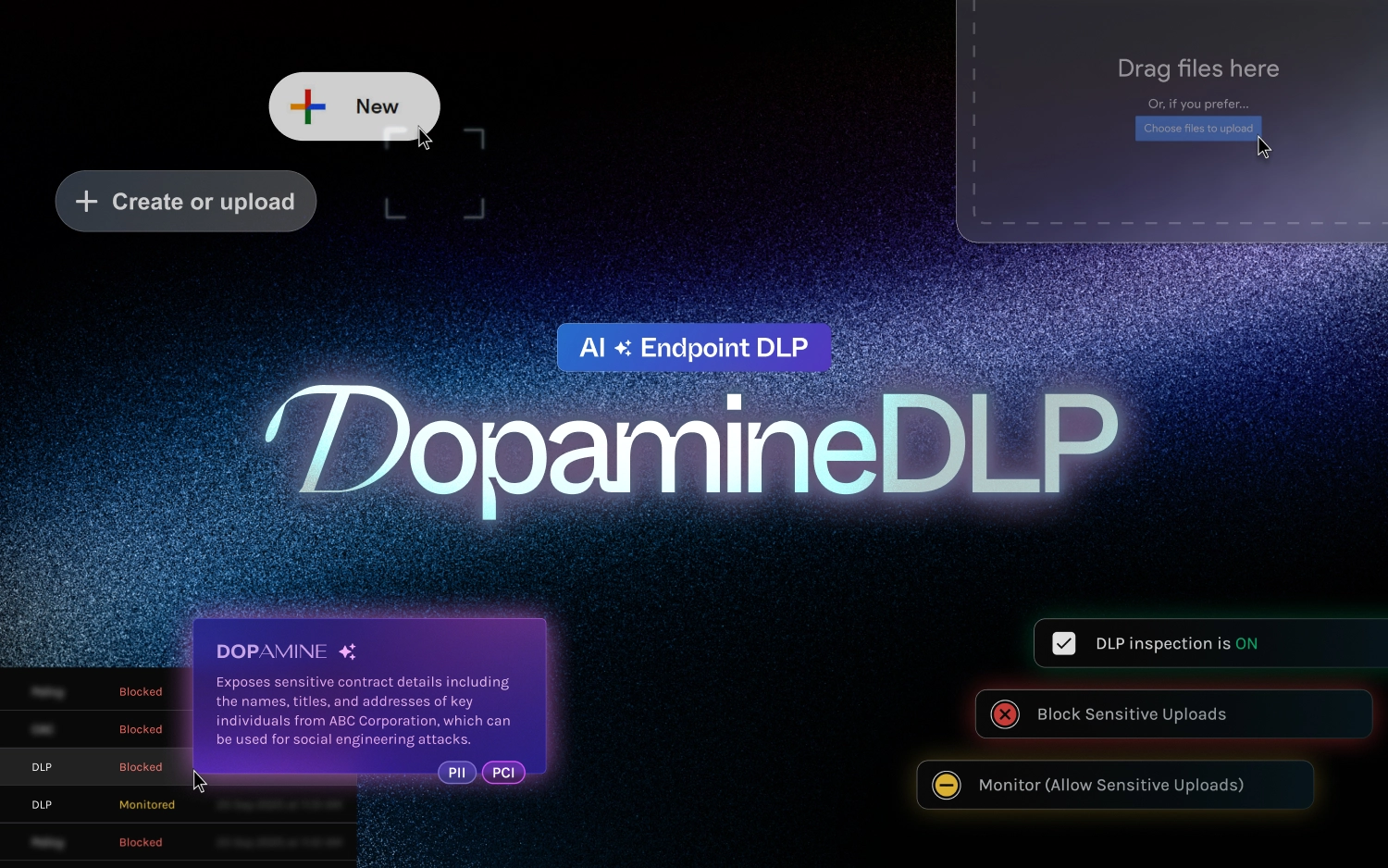Prisma Access Replacement & Migration Guide (2025)
.webp)
From Prisma Access to dope.security: Simplifying SSE Without the Bloat
Thinking about a Prisma Access replacement? This step-by-step migration guide shows how to move to dope.security’s endpoint-based SSE—faster browsing, fewer breakages, stronger privacy.
TLDR; If your secure web gateway feels like a layover—extra hops, random app breakage, and too many moving parts—you don’t need another hub, you need a direct flight. dope.security runs inspection on the endpoint, not through a cloud proxy, so traffic goes straight to its destination. That architecture is faster, breaks less, and logs less sensitive data with third parties.
Why teams start looking for a Prisma Access replacement
Most organizations didn’t set out to add complexity. It crept in. New sites, more remote users, additional policies, another feature bundle. Before long, what began as a clear Security Service Edge (SSE) plan can feel like a patchwork of tunnels, exceptions, and scheduled maintenance windows. The result is a security stack that’s powerful but heavy—lots of knobs to turn, lots of places where a certificate or inline inspection can rub against a SaaS app and cause friction.
When leaders say “we need a Prisma Access migration plan,” what they usually mean is, “we want the same protection with less overhead, fewer surprises for users, and a privacy posture that’s simpler to defend.” Those are exactly the outcomes an endpoint-based approach aims to deliver.
What “simplified SSE” actually means
Simplified SSE is not about giving up control, it’s about moving control closer to the user so you remove the detour. In a traditional cloud-proxy model, traffic is sent to a provider’s point of presence for inspection and then forwarded on. In an endpoint-based model like dope.security, traffic is inspected on the device and goes directly to the site or SaaS app. That one change affects almost everything your users feel and your admins manage:
- Speed that feels like the open internet. Fewer hops mean pages load predictably, less video buffering, and meetings join instantly.
- Fewer brittle points. No inline proxy in the middle reduces the chance of TLS oddities and “please try again” moments.
- Privacy by design. If traffic is inspected locally, you can keep more user and URL data out of third-party clouds.
- Simpler ops. No tunnels to deploy or babysit. You manage policy, not plumbing.
dope.security pairs its endpoint-based SWG with AI-powered CASB DLP, so you get data controls and app visibility without the complicated DLP policy setup and with fewer false positives thanks to using LLM comprehension vs regex pattern matching.
Architecture, translated to plain English
Think of two flights from San Francisco to New York:
- Legacy Cloud-proxy SSE is the connection through a hub: take off, land in the middle, take off again. Still gets you there, but each leg adds time and the chance of delays.
- Endpoint-based SSE is the direct flight: take off once, land once. You still pass security checks (that’s the on-device inspection), but you skip the connection.
Both models can be secured. The direct flight simply has less to go wrong, and less for your team to manage day-to-day.
What carries over—and what gets simpler
A common fear with any Prisma Access migration is losing control. Here’s the reality in plain terms:
- Policy fidelity: URL filtering, app controls, and data rules all map cleanly to dope.security policies. You enforce what matters; you just stop backhauling traffic to do it.
- Roaming users: Endpoint-based inspection travels with the user. Whether they’re at HQ, on hotel Wi-Fi, or tethered in an Uber, the behavior is consistent. There is no requirement to be on a corporate network to be secured.
- Reporting & investigation: You still see who did what and when. The difference is how much sensitive data has to live outside your environment. With dope.security, it all stays local on your device.
Mapping controls: Prisma Access → dope.security
(Keep your IdP, MFA, and any ZTNA you like; dope.security slots in without forcing a wholesale identity change.)
TCO without the mystery math
Budgets don’t just leak on license lines; they leak in time. Inline proxies demand care and feeding: peering considerations, exception wrangling, change windows, and the tickets that follow. Endpoint-based inspection removes the stop over and much of that operational drag. The dollar savings show up as fewer disruptions, fewer retries, and fewer hours spent tuning a traffic detour that no longer exists.
If you want to quantify this for the CFO, track three simple numbers before and after pilot:
- tickets related to “slow web” or “can’t preview/join”
- median page-load delta on five common sites
- admin hours spent on exceptions or tunnel upkeep
Most organizations find that these curves move in the “up and to the right” direction quickly.
Real-world signs your migration is working
You’ll know you’re on the right track when people stop talking about the SWG. Pages load like they did before security. Previews render without special treatment. Meetings just join. Your helpdesk queue shrinks, your runbooks get shorter, and your privacy notes get simpler. That’s what simplifying SSE without the bloat looks like.











